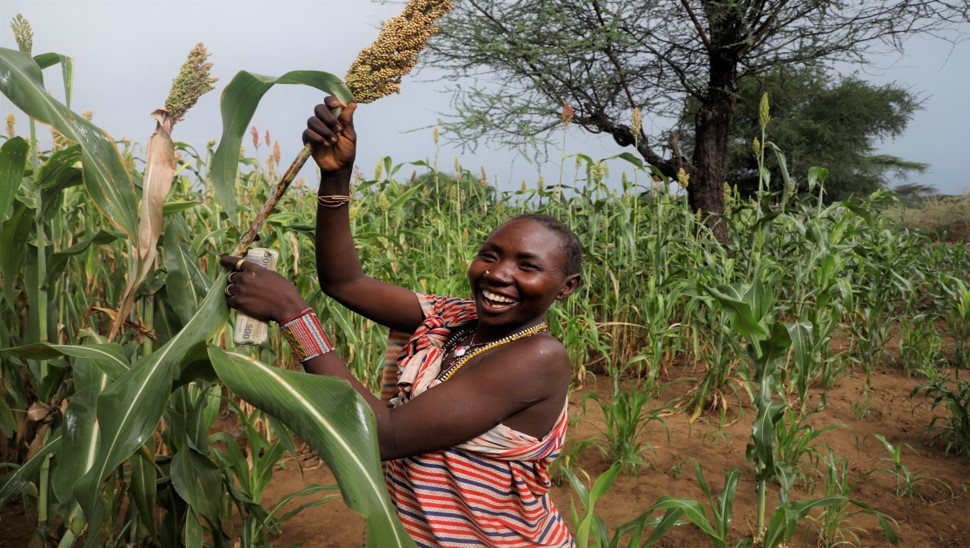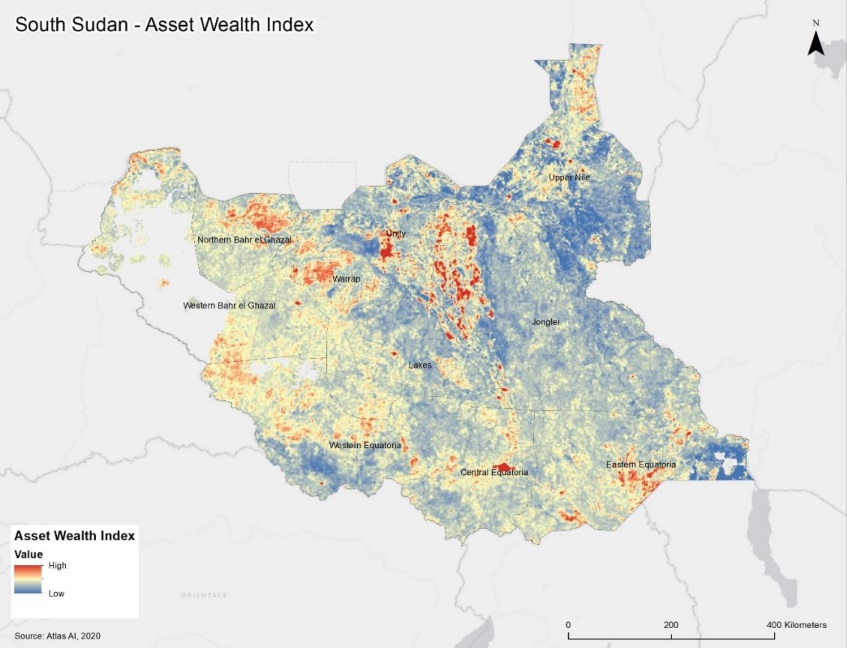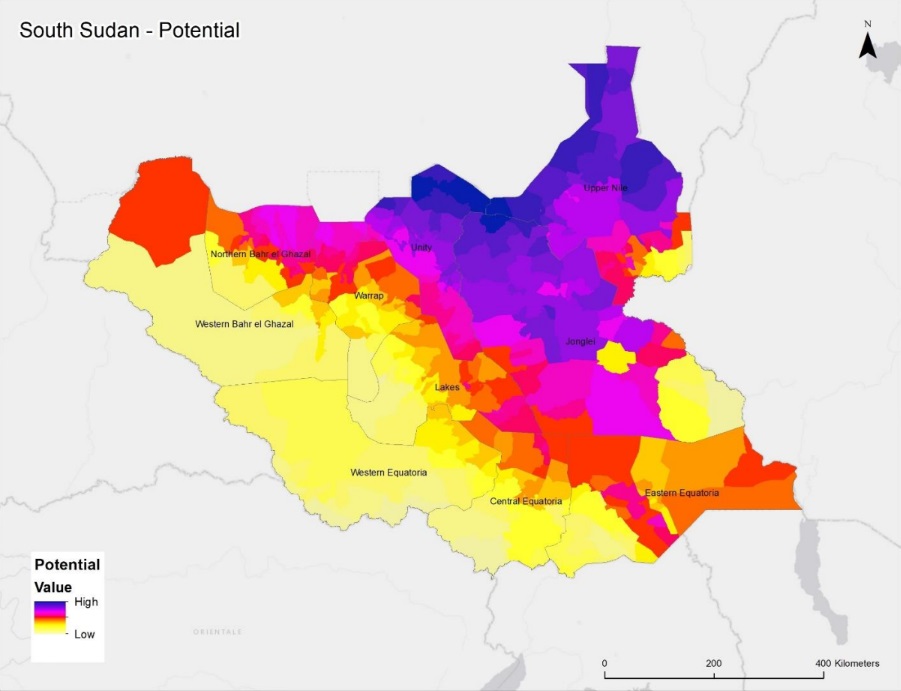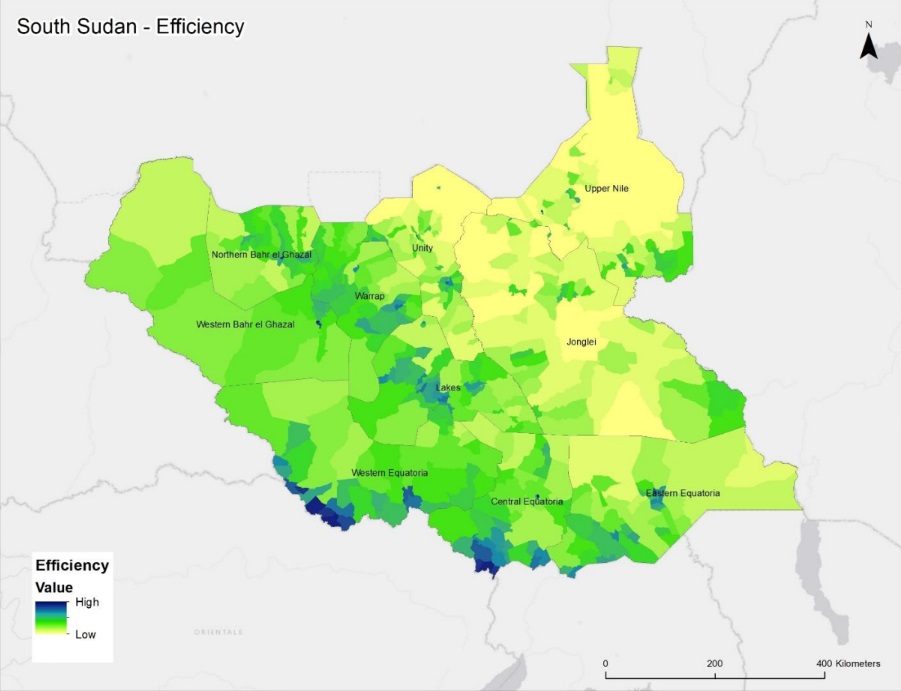South Sudan Investment Proposal

The Proposal
South Sudan is presenting four investment cases aimed at increasing production and productivity and improving food security and nutrition. These efforts align with the government's strategy to transform South Sudan's agriculture and livestock into a thriving sector and a driving force for inclusive growth and economic diversification. The focus areas include increasing sorghum production, enhancing storage and processing capacities, boosting rice production and commercialization through the Aweil Rice Scheme (ARS), improving meat production from cattle and small ruminants, increasing milk and poultry production, processing, and commercialization, and expanding the capacity and value of capture fisheries to meet the growing demand in domestic and export markets.
These investments are critical for addressing key bottlenecks in the transformation of the agriculture sector. They form the main pillars of value chain development initiatives, including the investment cases presented at last year’s forum, which focused on sorghum, sesame, rice, and fisheries.
The total investment cost for the current year's investment cases is approximately USD 280 million, with an estimated internal rate of return of 16-23%.
The government has developed and submitted a proposal for rice, sorghum, and fisheries, totaling USD 39.7 million.
.jpg?sfvrsn=b9e901d8_1)
.png?sfvrsn=ba7c5426_1)
.jpg?sfvrsn=57270faf_1)
Total Investment | 64.03 Million USD |
IRR Value | 16.74% |
NPV Value | 7.71 Million USD |
Direct Beneficiaries | 10,720 |
Indirect Beneficiaries | 32,800 |
Total Beneficiaries | 43,520 |
Per capita income increase | 638 USD/year |
ExACT TOOL | 000 |
Total Investment | 37.7 Million USD |
IRR Value | 25.69% |
NPV Value | 17.38 Million USD |
Direct Beneficiaries | 8,720 |
Indirect Beneficiaries | 19,274 |
Total Beneficiaries | 27,994 |
Per capita income increase | 1378 USD/year |
ExACT TOOL | 000 |
Total Investment | 144.22 Million USD |
IRR Value | 22.37% |
NPV Value | 71.77 Million USD |
Direct Beneficiaries | 105,110 |
Indirect Beneficiaries | 336,352 |
Total Beneficiaries | 441,462 |
Per capita income increase | 945 USD/year |
ExACT TOOL | 000 |
.jpg?sfvrsn=c18cb52_1)
Total Investment | 18.77 Million USD |
IRR Value | 21.65% |
NPV Value | 3.51 Million USD |
Direct Beneficiaries | 1,170 |
Indirect Beneficiaries | 8,190 |
Total Beneficiaries | 9,360 |
Per capita income increase | 1,621 USD/year |
ExACT TOOL | 000 |
South Sudan Typologies
Poverty
Potential
Efficiency
Click on individual maps to get detailed view on FAO GIS platform
Agro-informatics connects information technology with the management, analysis and application of agricultural data to design more accurate and targeted agricultural interventions. The use of new technologies and techniques in agriculture, such as satellite imagery, remote sensing, and geographic information systems, enable the transformation of data into actionable information.
Government of South Sudan: Investment cases in South Sudan
South Sudan Investment Cases and Interventions
| Sorghum64.03 Million USD43,520 Beneficiaries |
Sorghum plays a pivotal role in South Sudan's food security, constituting 76% of the national food supply and about 70% of all cereals. It serves as a crucial staple crop for many South Sudanese, extensively cultivated across the country. Approximately 80% of households cultivate sorghum using local seed varieties saved from their own harvests.
In 2022, national sorghum production totaled 741,339 metric tons across 759,469 hectares, achieving a yield of 0.98 MT/ha. However, productivity remains constrained by various challenges, including limited access to quality inputs such as seeds, fertilizers, labor, equipment, and financial services. Most households allocate less than two acres of rain-fed land to sorghum within mixed cropping systems. Furthermore, inadequate infrastructure, particularly storage facilities, contributes to high transportation costs, high post-harvest losses, and limited market access. Extension services are also inadequate and weak.
To enhance the sorghum value chain, an investment of $64 million is required to support 45,664 smallholder farmers. This investment aims to boost sorghum production, processing, and commercialization by improving access to certified seeds, establishing propagation systems, and enhancing storage and hulling facilities. The Internal Rate of Return (IRR) is 16.7% with a net present value (NPV) of $7.7 million USD.
| Rice37.7 Million USD27,994 Beneficiaries |
Rice is ranked among South Sudan's top four staple cereals, cultivated through both upland and lowland/paddy rice production systems. Significant investments are needed to rehabilitate the irrigation canals at the Aweil Rice Scheme (ARS), upscale access to sustainable improved rice inputs and services, such as development of resilient seed varieties and increasing mechanization. Promoting credit input schemes. Climate-smart and resilient rice production include demonstrating and adopting advanced techniques, alongside providing technical assistance to the Aweil Rice Research Center (ARS). Improving marketing by rehabilitating a 25 km access road and introducing small-scale post-harvest processing and value addition equipment for farmer groups and enterprises.
Overall, the investments to enhance rice production, productivity, and commercialization from the Aweil Rice Scheme (ARS) total $25.9 million USD, benefiting 20,784 smallholder farmer households. The IRR is17.7% with a net present value (NPV) of $5.5 million USD.
.jpg?sfvrsn=98132d84_1) | Livestock144.22 Million USD441,462 Beneficiaries |
Meat
Livestock production in South Sudan primarily under agropastoral and pastoral systems, of local undefined breeds. Meat holds a significant role in daily diets, featuring prominently in socio-cultural events, and serving as a critical food source during crop failures. In 2022, national production reached 246,185 metric tons, supplemented by 840 tons of imported bovine meat. Notably, South Sudan lacks meat packaging or processing facilities.
Major challenges facing meat production include low productivity due to limited access to quality inputs, credit constraints, and seasonal cattle migrations. Additionally, there are obstacles such as traditional perceptions where livestock are seen primarily as assets, hygiene issues, inadequate slaughter and processing facilities, lack of skilled personnel, and lack of electricity. Furthermore, limited market access is exacerbated by poor road conditions and inadequate market infrastructure.
Milk
.jpg?sfvrsn=d12f2ad6_1)
In 2022, milk production in South Sudan totaled 3.45 million tons, a decrease from 3.66 million tons the previous year. Milk is a crucial component of the South Sudanese diet, consumed both fresh and fermented. In 2021, South Sudan imported $6.56 million worth of concentrated milk. Over the years, milk powder imports have surged from 99 tons in 2013 to 4,386.53 tons in 2022, marking an average annual growth rate of 163%.
Challenges facing milk production include low productivity stemming from limited access to inputs, improved livestock breeds, veterinary and extension services. Issues such as poor livestock management, market access constraints due to traditional husbandry practices, and seasonal livestock movements in search of water and pasture further hinder production. Moreover, inadequate processing and storage facilities, coupled with hygiene and food safety issues, contribute to post-harvest losses and limit marketing options.
Poultry (meat and eggs)
.jpg?sfvrsn=762c65c7_1)
Poultry production in South Sudan primarily follows a free-range system, with an annual production of approximately 6.05 million chickens. Currently, there are 20 small-scale and 2 medium-scale commercial producers, primarily concentrated around Juba. Poultry meat and eggs are vital food sources for socio-cultural and religious events. In 2022, South Sudan imported 2,668 tons of poultry meat, a decrease from 3,882 tons the previous year, primarily frozen chicken, marking a 31.26% decline.
Key challenges in poultry meat and eggs production include limited access to day-old chicks and other essential services along the value chain. There is also a shortage of locally produced poultry feeds. Meeting the consistent demand from groceries, supermarkets, and hotels for chicken and eggs is challenging due to irregular supply chains. Furthermore, the limited availability of cold storage facilities for slaughtered chicken poses additional hurdles.
A total investment of $164 million USD is required to improve meat (from cattle and small ruminants), increase milk and poultry production, and boost processing and commercialization. This investment will benefit 442,596 farmers. The projected IRR is 19.41%, with a net present value (NPV) of $61.5 million USD.
.jpg?sfvrsn=8fa6e6c3_1) | Fisheries18.77 Million USD9,360 Beneficiaries |
South Sudan boasts abundant inland fisheries resources, yielding approximately 265,000 tons annually. Directly supporting 1.7 million people, fisheries play a vital role in livelihoods by supplying essential protein and bolstering food security, especially during crop failures or shortages. The sustainable potential from wild fisheries is estimated at around 300,000 tons annually, equating to approximately USD 300 million per year. States with abundant fishery resources include Upper Nile, Jonglei, Unity, Northern Bahr el Ghazal, Warrap, and Lakes.
Around 70% of the fish catch undergoes processing in fishing camps and villages, primarily through smoking or drying, while the remainder is sold fresh whole. Post-harvest losses exceed 60% due to inadequate handling, storage, processing, and transportation. In the last two years improved road infrastructure has significantly boosted dried fish exports to the Democratic Republic of Congo (DRC) and Uganda, generating an estimated USD 30 million in export earnings.
To meet increasing domestic and export demands and enhance the value of capture fisheries, the sector requires a $24.8 million investment. This investment will enable provision of materials and supplies to fisherfolk, establish quality and standard control systems, upgrade fish transport equipment, improve access roads from fish landing sites to main roads, and establish fish flour processing plants. These investments will benefit 9,594 fisher households. The IRR is 21.65% with a net present value (NPV) of $3.5 million USD.

The Government, World Bank and FAO scale up actions to build farmers’ climate resilience in the face of flooding and other disaster risks A USD30 million project aims to provide critical life-saving and livelihood assistance, sustainable recovery and resilience building support to smallholder farmers [see more]
| -crop.jpg?sfvrsn=51763585_1) |
| |||






.jpg?sfvrsn=dc7039ef_1)
.png?sfvrsn=248cbd8f_1)